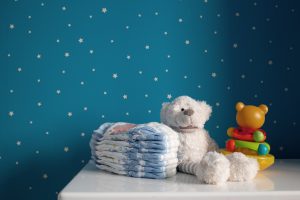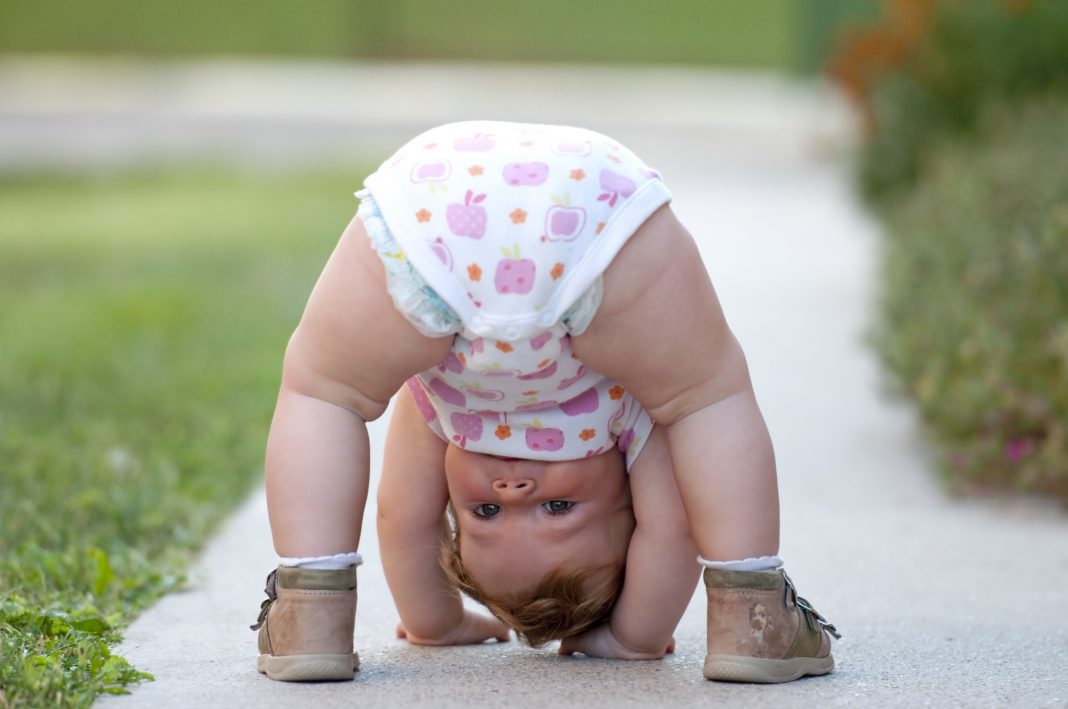The most common cause of nappy rash in children is irritation, according to the Royal Children’s Hospital Melbourne (RCH). The irritation can come from “constant urine and faeces and friction from materials (e.g., cloth and disposable nappies) that cause damage to the skin”.
Bacteria, yeast such as candida, detergents and nappy wipes may also contribute to nappy rash.
“When you [urinate], it’s sterile, but it [urine] gets broken down by air,” Community Pharmacist and Master Herbalist Gerald Quigley said.
“So if you’re using nappies that aren’t changed all that much or you’re perhaps not cleansing those areas as well as they should be cleansed, then there’s the possibility the skin will break down.”
Signs and symptoms of nappy rash
The RCH lists some of the common signs and symptoms of nappy rash, aimed at parents concerned that their child has developed the condition.
They include:
- The skin in the nappy area generally looks red and raw, and can be spotty in appearance.
- It can be sore or itchy when the area is wiped.
- Your baby may be unsettled and irritable.
Managing nappy rash
Mr Quigley says managing nappy rash is about maintaining “the skin barrier”, with “many options” available to deal with the condition when it develops.
“Pop a little Ego Pinetarsol in the bath and make sure your child has a chance to soak those areas in there,” he advised.
“And then it’s a matter of patting dry and putting on a barrier, which usually … [is] something like zinc cream … I find it invaluable for nappy rashes … particularly in babies where they might perspire heavily, and you just have to try and give a bit of protection.”
In addition to cleansing, Mr Quigley suggests “changing to a disposable nappy” and “giving the baby nappy-free time”.
“So, perhaps if they’re crawling, putting their backsides [safely] in the sun for three to four minutes just to let the sun give a little bit of vitamin D support.
“And then just checking regularly, bearing in mind that nappy rashes can get worse with an infection. They can get worse with teething and even changes in food options, when solids are being introduced.
“Usually, their motions will change, and that can actually irritate the skin [causing] the barrier to break down.”
The RCH also suggests using a disposable nappy to manage nappy rash, because “disposable nappies allow the moisture to be absorbed quickly, which helps keep the skin dry”.
Apart from keeping the skin clean and dry, other suggestions for managing nappy rash, as listed by the RCH, include:
- Changing nappies regularly, so that urine and faeces are not in contact with the skin for too long.
- As baby wipes, although convenient, may irritate the skin, use “cotton wool, paper towel or clean Chux-type cloths, dampened with lukewarm water” to clean your baby’s bottom.
- Apply a thick barrier cream (such as zinc paste) to your baby’s bottom after each nappy change.
The RCH also warns parents not to use “talcum powder or antiseptics on nappy rash” and recommends they seek medical advice if the rash hasn’t improved “in one week, or is severe”.
“Persistent nappy rash that doesn’t respond to nappy cream might need a medicated cream, such as an antifungal … or hydrocortisone … These creams should only be used on the advice of your doctor or pharmacist,” the hospital said.
Role of nutrition
Fertility and Prenatal Dietitian Melanie McGrice says nappy rash can sometimes be exacerbated by “food allergies and/or acidic foods”.
“So, if a nappy rash is a chronic issue, a consultation with a paediatric dietitian can be helpful,” she said.
“A deficiency of key nutrients [required] for wound healing, including but not limited to protein, vitamin C and zinc, would delay wound healing.
“But I wouldn’t recommend supplementing these nutrients in infants without a thorough nutrition assessment.”
To read the full feature as it appears in the February issue of Retail Pharmacy Assistants magazine, visit: rpassistants.com.au/magazines/retail-pharmacy-assistants-february-2020.
Reference:
- The Royal Children’s Hospital Melbourne, 2018. ‘Nappy Rash’. rch.org.au/kidsinfo/fact_sheets/Nappy_rash/ [Accessed 15/1/21].







